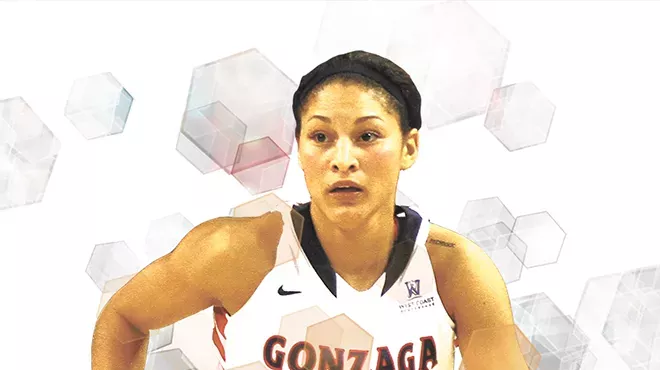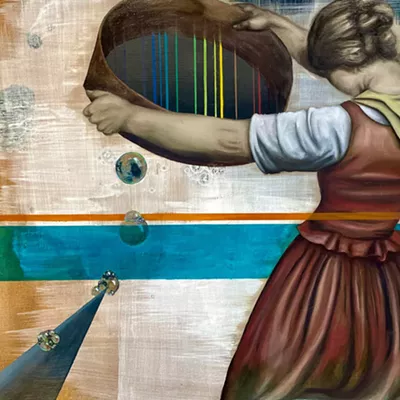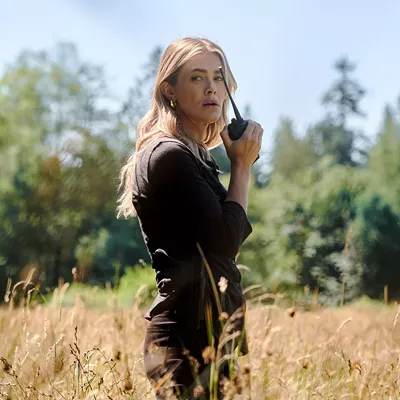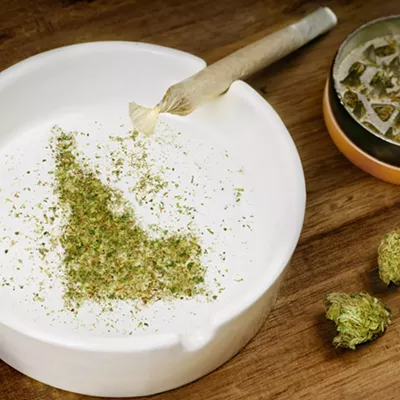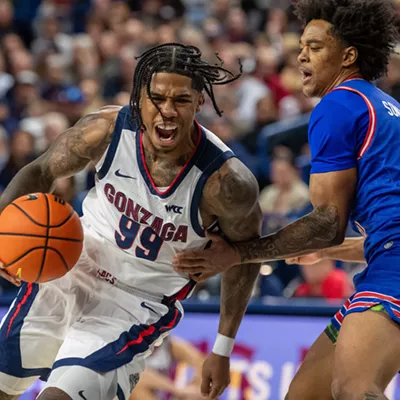For the fourth time in a little more than a decade, the Spokane Arena is playing host to NCAA men's basketball tournament games. Action kicks off on Thursday with four games, followed by two third-round games on Saturday. Here's the skinny on the teams heading to town.
HARVARD CRIMSON (12-East)
Record: 26-4, 13-1
Location: Cambridge, Mass.
Conference: Ivy League
Head coach: Tommy Amaker
This time around, the Crimson won't be sneaking up on anyone.
A year ago as a 14 seed, Harvard pulled the shocker of the NCAA tournament's first day, stunning third-seeded New Mexico, before falling to Arizona in the second round.
Amaker, a star guard at Duke in the mid-'80s whose coaching résumé includes stops at Seton Hall and Michigan, has the Crimson in the NCAAs for the third consecutive year. His team is deep, experienced and well-rested; the Ivy League has no postseason tournament, so Harvard was the first team to clinch an NCAA berth, nearly two weeks ago.
The Crimson do a lot of things well: playing defense, forcing turnovers and blocking shots, and shooting and distributing the ball. They're notable for their offensive balance, with six players averaging between nine and 14 points per game, and strong senior leadership in forward Kyle Casey and guards Laurent Rivard and sixth man Brandyn Curry.
Casey and Curry returned to the team this season; both withdrew from school and sat out a year after being investigated in a campus-wide academic scandal. Rivard and sophomore point guard Siyani Chambers are the top threats from 3-point range, while Ivy League Player of the Year Wesley Saunders, a junior swingman, leads the Crimson in scoring and does a little of everything. He'll likely draw the defensive assignment against Cincinnati star Sean Kilpatrick.
With almost half of its games against Ivy League opposition, Harvard's strength of schedule — 243rd out of 349 teams, according to ESPN — is nothing to brag about. Two of the Crimson's four losses were on the road against NCAA tournament teams Colorado (70-62) and Connecticut (61-56).
— MICHAEL MAHONEY
CINCINNATI BEARCATS (5-East)
Record: 27-6, 15-3
Location: Cincinnati, Ohio
Conference: American Athletic
Head coach: Mick Cronin
For the Bearcats, it's all defense, all the time. Cincinnati allowed just 58.3 points per game, sixth-best in the country. This team knows how to play and win ugly. Really ugly. Look no further than its 44-43 victory over fellow NCAA tournament team Pittsburgh, a real slobberknocker. This hard-nosed club defeated popular Final Four pick Louisville, as well as Connecticut and Memphis (twice) and only dropped one game to a team not in the tournament (and that was at SMU, one of the last teams out).
Star senior shooting guard Sean Kilpatrick carries the bulk of the scoring load for the Bearcats with a powerful skill set that balances deep shooting and fearless slashing.
Actually, "the bulk" might be an understatement: While dropping 20.7 points per game (15th in the country), he shoots more than 25 percent of his team's field goal attempts, more than 45 percent of its 3-pointers and more than 40 percent of its free throws. Justin Jackson leads the Bearcats' stout interior defense (2.9 blocks per game despite only being 6-foot-8), and he and his quick-handed teammates accrue 7.9 steals per game (20th best in the nation).
Cincinnati plays with an ever-present chip on its shoulder, and perhaps with good reason. Despite finishing tied for first in the American Athletic Conference standings, few give the Bearcats any shot at advancing to the Sweet 16. Even officials don't seem to respect them. A few weeks back, referee Ted Valentine and Cronin got into it midgame; they went nose-to-nose, and the ref began yelling in his face. While momentum builds behind Harvard as potential upset pick, expect Cronin to employ this latest case of perceived disrespect as a motivational tool for his scrappy squad.
— SETH SOMMERFELD
MICHIGAN STATE SPARTANS (4-East)
Record: 26-8, 12-6
Location: East Lansing, Mich.
Conference: Big Ten
Head coach: Tom Izzo
Izzo has his Spartans in the NCAA tournament for the 17th consecutive year, the fifth-longest such streak in history. Only Kansas (25) and Duke (19) have longer active streaks.
Making the big dance is usually a foregone conclusion for the Spartans, but that wasn't the case this year, though the season began that way.
A three-week stint atop the AP poll coincided with a 7-0 start. North Carolina (the East's 6 seed) put an end to the undefeated season on Dec. 4, but Michigan State got right back to work and ran off 11 straight wins.
Then disaster struck. More accurately, injuries took their toll.
Following that winning streak, the Spartans finished the regular season with just five victories in 12 games. Only one player, guard Denzel Valentine, appeared in all 34 games this season.
Healthy just in time for the Big Ten tournament, the Spartans regained their early season mojo. Convincing victories over Northwestern, Wisconsin (the West's 2 seed) and Michigan (the Midwest's 2 seed) earned Michigan State the Big Ten title and the conference's automatic bid to the NCAA tournament.
Every four-year player in Izzo's 19-year career has appeared in at least one Final Four. Seniors Adreian Payne (15.8 points per game, 7.4 rebounds per game) and Keith Appling (12.3 ppg, 4.6 assists per game) hope to keep that trend alive. To do so, they'll need help from sophomore shooting guard Gary Harris (17.1 ppg), who suffered a minor shoulder injury on Saturday. He should be good to go against Delaware, but another injury scare is the last thing the Spartans need this year.
— WILL MAUPIN
DELAWARE BLUE HENS (13-East)
Record: 25-9, 14-2
Location: Newark, Del.
Conference: Colonial Athletic Association
Head coach: Monté Ross
This isn't the same CAA that spawned Final Four runs from George Mason in 2006 and VCU in 2011. Those teams have moved to the greener pastures of the Atlantic 10. Once a league that sent multiple dangerous teams to the NCAA tournament every year, it's now a league ravaged by realignment.
Delaware, making its first NCAA tournament appearance since joining the league, looks to emulate those classic CAA Cinderellas.
The Blue Hens have the experience of playing four teams that made the NCAA tournament. In the nonconference portion of their schedule, they defeated Cal Poly (16 seed, Midwest) by 10 points, but lost to Villanova (2, East) by four, Ohio State (6, South) by 12 and North Dakota State (12, West) by 19.
With a 6-7 record entering the new year, Delaware didn't look like a tournament team. A 13-game winning streak from January into mid-February saved the Hens' season.
During that streak, the Delaware offense really came into form. They're the 24th highest scoring team in the nation, averaging 79.5 points per game. A quintet of players score in double figures, though Devon Saddler (19.7), Davon Usher (19.4) and Jarvis Threatt (18.1) do by far the most damage.
Threatt was suspended in late January for violating university policy. He was supposed to miss all of February, but was allowed back a bit early after the Hens lost twice in three games.
The offense has been humming along since Threatt's return. That's good, because a stout Michigan State defense is up next.
— WILL MAUPIN
OKLAHOMA SOONERS (5-West)
Record: 23-9, 12-6
Location: Norman, Okla.
Conference: Big 12
Head coach: Lon Kruger
Spokane welcomes back a familiar face as former Zag big man Ryan Spangler and the Sooners roll into town. Oklahoma finished second to Kansas in the loaded Big 12, with wins over NCAA tournament teams Iowa State, Kansas State, Baylor, Texas and Oklahoma State (twice). The lone bad loss came at the hands of Louisiana Tech in overtime at home back in December. It's all about offense for Oklahoma. With a frenetic pace and multiple 3-point gunners (the rotation sports four players who shoot over 38 percent), the Sooners rank seventh in the nation in scoring (82.2 points per game).
Sophomore guard Buddy Hield leads the team with 16.8 ppg while firing up seven 3-point attempts a game. The only reason that doesn't give Kruger an aneurysm? Hield connects on 39.7 percent of those attempts. The second leading scorer, forward Cameron Clark, shoots even better from behind the arc, hitting 42.5 percent. Spangler, always a bruiser, has developed into the main inside presence, averaging just under a double-double (9.8 ppg, 9.4 rpg) while shooting a gaudy 59.4 percent from the field.
While Oklahoma's accelerated pace creates frequent scoring chances, it also provides more chances for opponents to score. The Sooners surrendered 75.9 points per game, a dismal 308th in Division I. Louisiana Tech hung 102 on Oklahoma. With no inside defensive anchor for the Sooners, North Dakota State (which leads the nation in field goal shooting percentage) should be able to put up some points. The Sooners just plan on scoring more.
— SETH SOMMERFELD
NORTH DAKOTA STATE BISON (12-West)
Record: 25-6, 12-2
Location: Fargo, N.D.
Conference: Summit League
Head coach: Saul Phillips
Football, not basketball, is the main event at North Dakota State. The Bison have won the past three FCS national championships.
They're pretty good at basketball, too. That's why they're here.
This is just NDSU's second Division I NCAA tournament appearance. That might not sound impressive, but the Bison have only been a member of Division I since the 2005-06 season.
Though lured away by larger contracts, many successful coaches spent their formative years in Fargo. Tim Miles, now leading Nebraska (the West's 11 seed), and Greg McDermott, coaching Creighton (the West's 3 seed), find themselves dancing in the same region as their old team. Closer to home, former Eastern Washington coach and Gonzaga assistant Ray Giacoletti spent the late 1990s as Bison head coach.
Early season tests against Saint Mary's, Southern Miss and Ohio State (6, South) all resulted in losses. However, the Bison gained invaluable experience from those games, beating Delaware (13, East) and Notre Dame.
Since the start of Summit League play, the Bison have lost just twice, at IPFW and Denver. They closed out the season with nine consecutive victories.
NDSU's offense is one of the country's most efficient. Led by 6-foot-7 senior guard Taylor Braun (18.2 points per game) and senior center Marshall Bjorklund (63.3 field goal percentage), the Bison make the most of their slow, deliberate possessions. At 6-8, Bjorklund is undersized, but it doesn't seem to matter. Only 5 percent of the team's shots are blocked, the lowest percentage in the country.
— WILL MAUPIN
SAN DIEGO STATE AZTECS (4-West)
Record: 29-4, 16-2
Location: San Diego, Calif.
Conference: Mountain West
Head coach: Steve Fisher
This is an outstanding defensive team, holding opponents to under 57 points per game — second in the nation — that doesn't shoot well and can struggle to score.
Cougar fans will be familiar with the Aztecs' best player: Xavier Thames was the jewel of Ken Bone's first WSU recruiting class, but left Pullman after his freshman year. Thames is a shoot-first point guard, leading the team in scoring at nearly 17 points per game despite hitting just 41 percent from the field; he averages only three assists.
All those missed shots leave plenty of opportunities for rebounds; that's something the Aztecs do very well, led by forward Josh Davis at almost 10 per game.
Only four teams enter the NCAA tournament with more victories. Of their four losses, two — including the Mountain West title game — were at the hands of conference rival New Mexico; another was against Arizona, the West's top seed. They've been a top-10 team for most of this year, rising as high as No. 5.
At their best, the Aztecs can play with — and beat — just about anyone, as they proved in January in a 61-57 victory at Kansas that snapped the Jayhawks' 68-game home unbeaten streak against nonconference opponents.
It's a relatively young team; Thames and Davis are the only seniors on the roster, and sophomores Winston Shepard (12.1 ppg) and Skylar Spencer start at forward. There's good size — six players go 6-7 or taller — but no true center.
Fisher has the Aztecs in the NCAA tournament for the fifth consecutive season, advancing as far as the Sweet 16 three years ago. He won an NCAA title with Michigan in 1989.
— MICHAEL MAHONEY
NEW MEXICO STATE AGGIES (13-West)
Record: 26-9, 12-4
Location: Las Cruces, N.M.
Conference: Western Athletic
Head coach: Marvin Menzies
The Aggies are no strangers to the Inland Northwest, but that's not to say they're comfortable here. Twice this season they've visited the region and twice they've lost: First 80-68 to Gonzaga in December, then 73-67 to Idaho last month.
They're also familiar with the West Region's top seed, Arizona. The Aggies managed just 48 points in a December drubbing at the hands of the Wildcats.
On the positive side, New Mexico State took down rival New Mexico, the South's 7 seed, 67-61 in what proved to be the team's biggest win of the season.
Speaking of big, you should know about 7-foot-5 center Sim Bhullar. With 99 blocks this season (3.4 per game) it's likely that Bhullar will hit the century mark in Spokane. Not to be overlooked are 6-10 forwards Tshilidzi "Chili" Nephawe and Renaldo Dixon. All three average at least 25 minutes per game.
That height gives the Aggies a serious advantage on the interior. As a team they shoot 53.5 percent inside the 3-point arc, 20th best nationally, and hold their opponents to just 44.4 percent.
It's a little guy, relatively speaking, who leads the scoring charge on this big team. Guard Daniel Mullings averages 16.8 points and 3.5 assists per game. However, he's been without his usual backcourt mate, K.C. Ross-Miller, for the past five games.
Ross-Miller has been suspended indefinitely after starting a brawl following the Aggies' Feb. 27 loss to Utah Valley. As of press time, the New Mexico State athletic department has yet to say if he will play in the NCAA tournament.
— WILL MAUPIN





